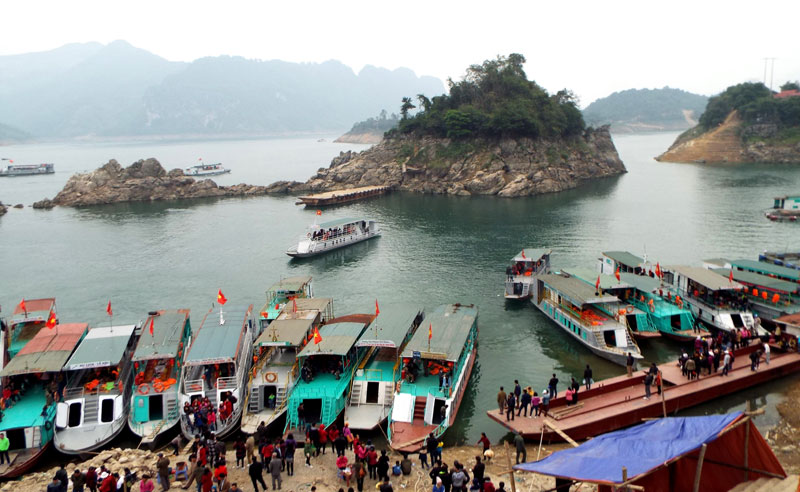


A series of tourist attractions have been set up around the 600
square kilometre Hoa Binh reservoir which spans residential areas of Mong, Thai
and Lu ethnic minority groups in Lai Chau province. Those include Sin Ho
village with excellent cultural features of Mong ethnic people, King Le Thai To
Temple which was recognised as a national treasure, and Pu Dao commune, lying
at the height of 1,400 metres above sea level with breathtaking natural
landscapes.
Meanwhile, excellent dances and swallow tail boat race can be seen in Muong Lay
commune (Dien Bien province).

Hoa
Binh reservoir has gorgeous natural landscapes with a range of tourist
destinations. Photo: Thac Bo Temple in Thung Nai commune (Cao Phong district)
and Vay Nua commune (Da Bac district).
Hoa Binh reservoir plays an important role in Hoa Binh province’s tourism
development plan. The Prime Minister has approved a master plan to develop the
Hoa Binh reservoir into a national tourism site. Accordingly, studying and
experiencing the culture of the Muong ethnic minority in parallel with the
reservoir’s ecosystem are seen as typical tourism products in the locality.
Community-based tourism has been a magnet for both domestic and foreign
visitors. Famous community-based tourism villages in the province are Ngoi
hamlet in Ngoi Hoa commune; Da Bia hamlet in Tien Phong commune (Da Bac
district), Ke and Sung hamlets (Da Bac), Dua (Coconut) island, Thung Nai (Cao
Phong), Thac Bo Temple in Vay Nua commune (Da Bac).

Foreign
visitors discover tourism route connecting Ke hamlet in Hien Luong commune to
Sung hamlet in Cao Son commune.
The provincial People’s Committees of Hoa Binh, Son La, Lai Chau and Dien Bien along
Da River have preferential policies and mechanisms to attract enterprises,
organisations and individuals to pour investment in local tourism. They should
work to evaluate tourism development potential, form sets of solutions to
implement major tourism infrastructure projects.
Waterway tourism through Hoa Binh, Son La, Dien Bien and Lai Chau provinces,
Hoa Binh-Son La tourism programme and Lai Chau-Dien Bien-Son La tourism
programme must be paid due attention as well.